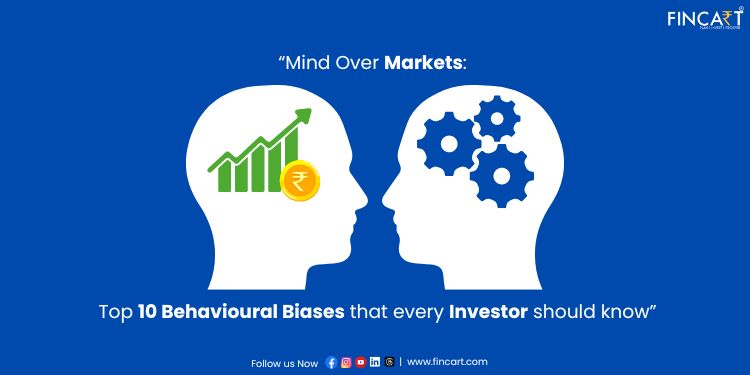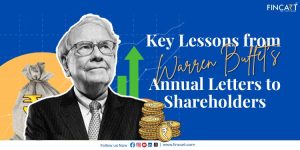Our divine Hindu scripture “The Bhagavad Gita” reminds us, “For him who has conquered the mind, the mind is the best of friends; but for one who has failed to do so, his very mind will be the greatest enemy.”
This teaching about the importance of mastering the mind can be directly linked to the world of investing.
In the context of investing, a person’s beliefs, emotions, and biases can get in the way of making rational investment decisions. Emotions like fear, greed, and impatience can cloud the judgment of investors. Neither individuals nor experienced fund managers are immune to these biases. They can impact how we think and go about our investments, many a time leading to not-so-smart decisions.
While some notions like discipline and patience help us in the investing journey, certain biases can prove to be barriers.
Let’s deep dive into some of these biases that you are susceptible to:
1. Overconfidence bias:
Many a time, people have the tendency to believe too much in their ability to predict the future of the market or pick the best investments.
According to a recent report by the Financial Industry Regulatory Authority (FINRA), US, almost 2 in 3 investors, 64%, rate their investment knowledge highly.
They may be tricked into thinking that they can beat the market and can suffer high trading losses, as a result.
2. Trend-chasing bias:
Many investors make investment decisions primarily based on past returns.
For example, Rishabh purchased 100 shares of PQR Ltd. just because it offered a fair return of 25% last year.
Though looking at the charts and trends is not bad, issues may arise if you only consider past returns in making investment decisions. Historical returns need not necessarily translate into future returns. It’s, therefore, better to look at the company’s strengths and weaknesses, its present position, and more.
3. Familiarity bias:
This bias arises when investors tend to stick to familiar and known investments. This can hinder the diversification of their portfolio and can expose them to greater risk.
4. Confirmation bias:
Confirmation bias is when an investor believes and seeks information that supports his perceived notion. He neglects the information that doesn’t match his belief.
Suppose an investor is a dedicated and loyal customer of a brand. His decision to buy its stock may already be set in his mind, regardless of the actual valuation.
5. Herd mentality bias:
Many investors often buy stocks because other investors are buying them. In this process, they may often end up with a riskier investment that doesn’t align with their risk appetite.
The much-hyped IPO of Reliance Power (at Rs. 11,700 crores) in January 2008 is a classic example of herd mentality bias. It attracted many investors, was priced at Rs. 450 per share, and got oversubscribed 73 times. On the day of listing, the share prices witnessed a 17% loss and continued to drop afterward.
6. Regret aversion bias:
People want to avoid the regret that they have made a poor investment decision. They might hold on to a failing investment, even when they could exit earlier.
For example, an investor bought 50 shares of a stock believing it has a small chance of losing value. However, the stock’s value started to decline over time. He still held onto the stock and didn’t sell when the probable loss was small, just because he didn’t want to feel bad about his choice.
7. Recency bias:
Recency bias is when people only pay attention to recent events, like a stock’s recent performance, and ignore its overall history. It’s like making decisions based on the latest news without considering the bigger picture.
To take an example, assume Shiv, an amateur investor, wants to invest in any one of three companies A, B, and C. The average annual returns of the companies over the last 10 years were 20%, 30%, and 50% respectively.
A clear choice would have been Company C but Shiv learns that one of the group’s investors had recently invested in a firm that went bankrupt. Although no direct connection was there between Company C and the bankrupt firm, it created a negative image in Shiv’s mind. So, he avoided investing in Company C.
8. Anchoring bias:
Anchoring bias is the tendency of people to rely too much on the first piece of information they get and then make all their decisions based on that.
It’s a bit like when you see a watch online for Rs. 20,000, and after finding a similar one at a local shop for Rs. 27,000, you think the Rs. 20,000 one is a better deal. Anchored to the initial price you saw, you forget to consider other factors such as the car’s safety rating, resale value, or fuel economy.
In investing, anchoring can take several forms. For instance, you purchase a stock for Rs. 100 and then you psychologically stick to that price whenever you decide to sell or make additional purchases of the stock – rather than looking at the stock’s actual value and other relevant factors.
9. Hindsight bias:
Hindsight bias is when people believe they accurately predicted an event in the past before it happened. For example, you may encounter many people who claim that they already knew of the 2008 financial crisis or the dot com bubble of the late 1990s. This belief can make them think that they can accurately predict other events as well.
But sometimes things can turn your way because of luck, not skill. Especially in investments, there are many unpredictable and random price movements in general.
10. Disposition bias:
Many investors are more likely to sell those stocks that have made them money but tend to hold on to stocks that have declined in value. For example, if someone sees one of their stocks making a good profit, they might sell it fast to lock in the gains. Conversely, if another stock is losing money, they might hold it for too long, hoping it will go up again.
This tendency can sometimes lead to selling the winners too soon and holding onto the losers for too long, causing financial losses.
Conclusion
One bad decision can harm your overall wealth. So, it is important to know about different biases and the ways to handle them.
Investing is not just about numbers; it is also about being cautious and making decisions that stand the test of time.
Make decisions based on thorough research and reliable information rather than emotions or instincts. If you notice a trend; it means that others have already acted on it. Trying to jump in may mean you end up buying at higher prices, only to see them fall later. Warren Buffet once said it’s wise for investors “to be fearful when others are greedy and to be greedy only when others are fearful.”




